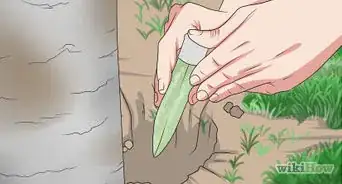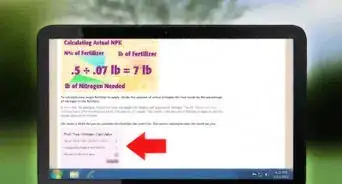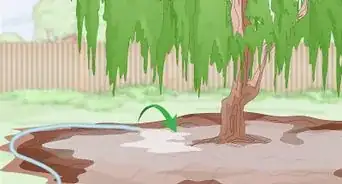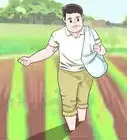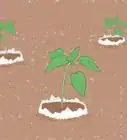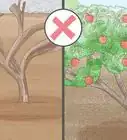This article was co-authored by Lindsey Swett and by wikiHow staff writer, Sophia Latorre. Lindsey Swett is a Plant Specialist and the Owner of Niche Plant Shop in Boston, Massachusetts. She has over a decade of experience working in several plant settings, including golf courses, public parks, and commercial garden centers. Her focus now is on helping plant owners care for their indoor plants. Lindsey holds a Master of Landscape Architecture from The University of Michigan.
wikiHow marks an article as reader-approved once it receives enough positive feedback. In this case, 100% of readers who voted found the article helpful, earning it our reader-approved status.
This article has been viewed 247,581 times.
Plants can become over fertilized if too much fertilizer is added to the soil or when nutrients are left behind in the soil as water evaporates. Don’t worry, most over fertilized plants can be saved by a few simple steps. Remove visible fertilizer from the plant and soil, and leach away the fertilizer by allowing water to run through the roots. Then, remove damaged foliage and wait about a month before feeding your plant again.
Steps
Identifying an Over Fertilized Plant
-
1Watch for weak or dying plants. If you’ve provided the proper amounts of sunlight and water, plants or seedlings that are weak, stunted, or dying could be suffering from an overabundance of nutrients. Look out for limp, wilted, crinkled, brittle, or very small roots, stems, and foliage.
-
2Check the leaves for discoloration. Look at the tops and bottoms of the leaves and see if you notice any discoloration or irregularities. Spots, pale coloring, brown or reddish leaves, and yellowing veins indicate too much fertilizer has been used.Advertisement
-
3Look for misshapen leaves. If the leaves on your plant are misshapen, it could indicate they are not receiving the right amount and mix of nutrients. Watch for curled edges and asymmetrical leaves, as well as wilting.[1]
-
4Notice excessive foliage with few flowers. Your overfertilized plant may have an overgrowth of foliage but very few blooms. Since the plant is lush, you may think that all is well. However, the plant is unable to bloom.[2]
-
5Examine the soil for fertilization buildup. Look for a white or crusty buildup on top of the soil of the plant. This buildup is the result of using too much fertilizer or fertilizer left behind when water evaporates.[3]
Removing Excess Fertilizer
-
1Remove any visible fertilizer. If the fertilizer is a powder, and you can see it on the plant or topsoil, removing it will prevent further overfertilization. Additionally, if the fertilizer salts have created a crust (typically white), that must also be removed.[4]
- Use caution when scooping the fertilizer away to ensure you don’t further distress or damage the plant or roots.
-
2
-
3Flood the root system. If the plant is in your garden, flood the soil around the root system before allowing the water to continue to drip at the plant's base for 30 minutes.[7]
- It's easiest to flood the root system using a garden hose, which creates a continuous stream.
-
4Allow the water to drain away. If the plant is in a pot, fill the pot with water and allow it to drain out the bottom. Repeat this step four times in order to make sure all the fertilizer is washed, or leached, away from the plant's roots.[8]
Saving Your Plant
-
1Remove damaged foliage. Using a pair of scissors, cut off damaged, misshapen, or wilting leaves. Even though you can rescue an overfed plant, the damaged leaves cannot be revived. Removing them is important to ensuring the plant's future health, and if they are permitted to remain, your plant may become a victim of pests or diseases.[9]
-
2Replant if possible. If the plant was severely overfed, transferring it to new, fresh soil after the leaching process is complete will provide your plant and its roots an opportunity to heal. Choose a new spot in your garden, well away from the fertilized area, or repot a plant with fresh soil.[10]
- If your plant is too large to move or you don’t have any available space left, add new soil to the container or plot instead.
-
3Avoid fertilizing your plant for several weeks. If your plant has been overfed, do not provide it more fertilizer until it appears healthy again (3 to 4 weeks). Allow time for your plant and its roots to recover from the strain of an overabundance of fertilizer.[11]
-
4Choose a fertilizer without nitrogen. When the time comes to begin feeding your plant again, you can prevent many of the negative effects of overfertilization by using nitrogen-free fertilizer.[12] Use only one quarter or one half of the recommended amount of fertilizer as directed on the package.[13]
Expert Q&A
-
QuestionWhat happens when you use too much fertilizer?
 Maggie MoranMaggie Moran is a Professional Gardener in Pennsylvania.
Maggie MoranMaggie Moran is a Professional Gardener in Pennsylvania.
Home & Garden Specialist By using too much fertilizer, you flood the soil with one particular type of nutrient. This can cause issues by making it harder for plants to absorb anything but those nutrients in the fertilizer.
By using too much fertilizer, you flood the soil with one particular type of nutrient. This can cause issues by making it harder for plants to absorb anything but those nutrients in the fertilizer. -
QuestionWhat symptoms could be seen with under- and over-fertilization of plants?
 Maggie MoranMaggie Moran is a Professional Gardener in Pennsylvania.
Maggie MoranMaggie Moran is a Professional Gardener in Pennsylvania.
Home & Garden Specialist Overdoing the fertilizer will cause yellowness and wilting of leaves on the lower plants as well as black and brown rotting roots. While if you under fertilize, the plant won't grow as well as it could have.
Overdoing the fertilizer will cause yellowness and wilting of leaves on the lower plants as well as black and brown rotting roots. While if you under fertilize, the plant won't grow as well as it could have. -
QuestionCan you over-fertilize a plant?
 Maggie MoranMaggie Moran is a Professional Gardener in Pennsylvania.
Maggie MoranMaggie Moran is a Professional Gardener in Pennsylvania.
Home & Garden Specialist Yes, you can over-fertilize a plant. This causes damages to the roots and leaves.
Yes, you can over-fertilize a plant. This causes damages to the roots and leaves.
Warnings
- When you are working with any fertilizer product that contains chemicals, be careful not to allow pets or children near it. Also, be sure to wash your hands thoroughly after use and follow all directions and guidelines that accompany the product.⧼thumbs_response⧽
References
- ↑ http://www.guide-to-houseplants.com/fertilizer.html
- ↑ https://dengarden.com/gardening/How-to-Save-an-Overfertilized-Plant
- ↑ http://www.guide-to-houseplants.com/fertilizer.html
- ↑ http://thegardenersrake.com/plant-care-saving-a-plant-that-received-too-much-fertilizer
- ↑ http://thegardenersrake.com/plant-care-saving-a-plant-that-received-too-much-fertilizer
- ↑ https://dengarden.com/gardening/How-to-Save-an-Overfertilized-Plant
- ↑ http://thegardenersrake.com/plant-care-saving-a-plant-that-received-too-much-fertilizer
- ↑ http://thegardenersrake.com/plant-care-saving-a-plant-that-received-too-much-fertilizer
- ↑ http://thegardenersrake.com/plant-care-saving-a-plant-that-received-too-much-fertilizer
- ↑ https://graciousgardening.com/how-to-save-over-fertilized-plants/
- ↑ https://www.jainsusa.com/blog/6-signs-you-are-over-fertilizing-your-plants
- ↑ https://ag.umass.edu/soil-plant-tissue-testing-lab/fact-sheets/over-fertilization-of-soils-its-causes-effects-remediation
- ↑ https://dengarden.com/gardening/How-to-Save-an-Overfertilized-Plant
About This Article
To revive an overfertilized plant, you’ll need to remove as much excess fertilizer as you can and water the plant thoroughly to flush out the fertilizer from the plant’s system. To start, carefully scoop out any fertilizer in the topsoil that you can see. Then, water the plant with distilled, room-temperature water until the soil is wet all the way through the root system. Once the water drains away, repeat this step 4 times to make sure all the fertilizer is washed away. To help the plant heal, snip off any misshapen, damaged, or wilted leaves with a pair of scissors. If you’re able to, replant it in a new area with fresh soil. Just make sure you don’t fertilize your plant again for several weeks so its roots have time to recover. To learn how to watch for signs of overfertilization, read on!

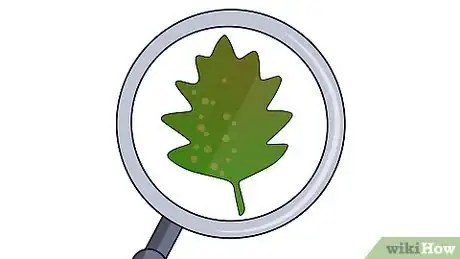
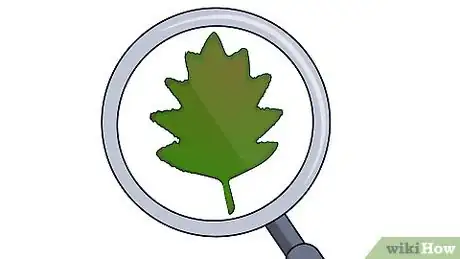


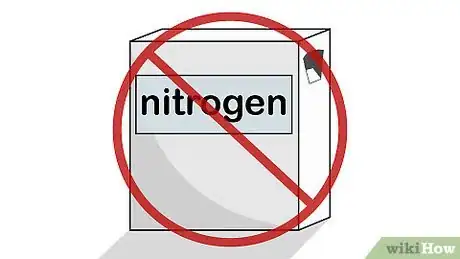

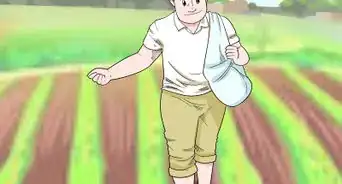
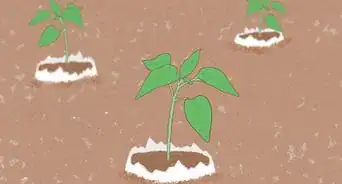
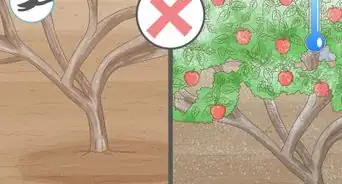
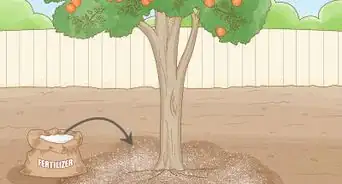


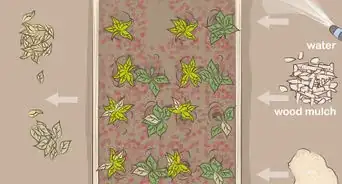
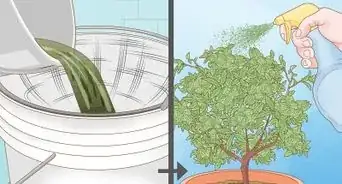
-Step-10-Version-3.webp)
